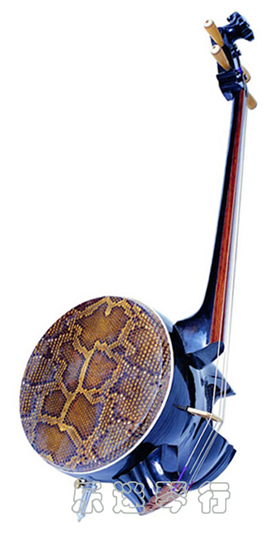
|
|
The gehu (革胡; pinyin: géhú) is a Chinese instrument developed
in the 20th century by the Chinese musician Yang Yusen (杨雨森, 1926-1980).
It is a fusion of the Chinese huqin family and the cello. Its four strings
are also tuned (from low to high) C-G-D-A, exactly like the cello's. Unlike
most other instruments in the huqin family, the bridge does not contact
the snakeskin, which faces to the side.
There is also a contrabass gehu that functions as a Chinese double
bass, known as the diyingehu, digehu, or beigehu (倍革胡).
By the late 20th century the gehu had become a rare instrument, even within
China, as the tendency for the snakeskin to lose its tightness increases
with humidity. Today, it is used mostly in Hong Kong and Taiwan, although
even there, the cello is beginning to become a popular replacement for
it. In addition, there are also other Chinese instruments that are able
to take on the role bowed bass range instrument, such as the laruan (which
uses the structure and acoustics of the ruan), the lapa (also known as
paqin, using the structure of the pipa), and the bass matouqin. |

